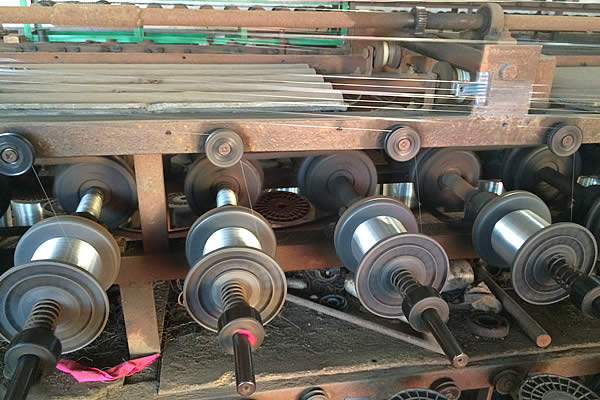 TEL:
+86-13102802206
TEL:
+86-13102802206
 Email:
fencenetting@china.com
Email:
fencenetting@china.com
 Language
Language
 TEL:
+86-13102802206
TEL:
+86-13102802206
 Email:
fencenetting@china.com
Email:
fencenetting@china.com
 Language
Language


The Cost Dynamics of Barbed Wire Rolls A Comprehensive Overview
Barbed wire, a material ingrained in the fabric of agricultural and security infrastructures, plays a crucial role in delineating boundaries, protecting property, and controlling livestock. As industries grow and evolve, understanding the factors influencing the cost of barbed wire rolls becomes essential for farmers, ranchers, and businesses alike. This article delves into the key components that affect the pricing of barbed wire, offering insights into market trends, materials used, and cost-saving strategies.
Factors Influencing Barbed Wire Cost
1. Material Composition The most significant aspect affecting the cost of barbed wire is the type and quality of materials used in its production. Typically, barbed wire is made from galvanized steel, which provides resilience and corrosion resistance. The thickness of the wire (often measured in gauge) also plays a role; thicker wire tends to be more expensive due to the increased material costs and durability it offers. Specialty wires, such as those with additional coatings for corrosion resistance, can further inflate prices.
2. Manufacturing and Transportation Costs The manufacturing process of barbed wire requires significant energy and resources, and fluctuations in energy prices can impact the overall cost. Additionally, transportation costs must be considered; as raw materials are sourced and the finished products are delivered, variations in fuel prices can lead to fluctuations in the market pricing of barbed wire rolls.
3. Market Demand and Supply The demand for barbed wire often correlates with agricultural trends, real estate development, and security needs. For example, an increase in farming activities or urban expansion can drive demand for fencing materials, thereby affecting pricing. Moreover, global supply chain dynamics, including trade tariffs and international labor costs, can impact the availability and cost of barbed wire.
4. Length and Design Barbed wire comes in various lengths and designs, which can significantly impact costs. Standard rolls typically measure 1,320 feet (or about 400 meters) in length. Higher-end designs, such as those with enhanced barbs or specific spacing for effectiveness against certain types of livestock, may come at a premium. Custom orders to accommodate unique fencing needs can also lead to increased prices due to additional processing involved.
5. Seasonality Seasonal demand variations can also affect costs. In regions where agricultural activities peak during certain times of the year, the demand for fencing may increase, leading to higher prices. Conversely, during off-peak seasons, prices may stabilize or even decrease, allowing buyers the opportunity to source materials at a lower cost.
Cost-Saving Strategies

Understanding the factors that influence the cost of barbed wire allows consumers to explore several strategies that can lead to savings
1. Bulk Purchasing Buying barbed wire in bulk can often significantly reduce the per-roll cost. Many suppliers offer discounts for larger orders, allowing businesses and individuals to save money in the long run.
2. Local Sourcing Investigating local suppliers can lead to savings on transportation costs while supporting local economies. Additionally, local suppliers may have a better understanding of the specific needs of the community, ensuring that buyers receive the most suitable products for their applications.
3. Comparative Shopping It is essential to compare prices across various suppliers. Online marketplaces, regional hardware stores, and specialized fencing retailers may offer competitive pricing. Taking the time to research can yield better deals and promote informed purchasing decisions.
4. Assessing Long-term Needs While initial costs may be a concern, considering the longevity and durability of the barbed wire is crucial. Investing in higher-quality materials may result in more significant savings over time, as replacements and repairs may be less frequent.
5. Utilizing Technology Advances in technology can lead to improved manufacturing processes, potentially lowering costs. Keeping abreast of innovations in fencing technology may present opportunities to procure more cost-effective materials.
Conclusion
The cost of barbed wire rolls is influenced by a multitude of factors, including material choice, manufacturing, market dynamics, and seasonal trends. By understanding these elements and employing strategic purchasing practices, consumers can navigate the market effectively, ensuring they secure quality fencing materials at competitive prices. Whether for agricultural purposes, security installations, or property delineation, making informed purchasing decisions plays a critical role in managing costs while meeting specific needs.